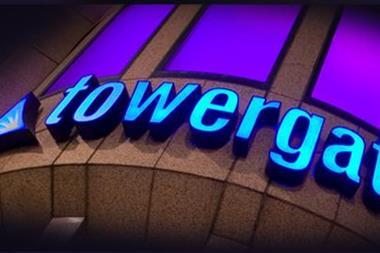How Towergate performed in the five key areas we highlighted last week

Assessing Towergate’s performance in 2011 is a challenge, not least because of the volume of changes the consolidator underwent during the year. The situation is more complicated this time because Towergate has reported statutory and pro-forma results in its main report, and has done the same again in its bondholder report (which excludes CCV).
Last week, Insurance Times highlighted five things to watch in Towergate’s 2011 results. Now the numbers are in, it’s time to see what they revealed.
1. The CCV effect (main report versus bondholder report)
Towergate’s main annual report includes CCV while the bondholder report does not because of the way the company is structured. Comparing the two can therefore give an indication of how adding CCV has affected the group overall. The effect of the inclusion is positive. Assuming CCV is the sole difference between the two sets of accounts, CCV added £17.4m to the group’s earnings before interest, tax, depreciation and amortisation (EBITDA) in 2011, up from £15.6m in 2010.
Towergate’s bondholders’ report reveals that CCV had £56.3m of turnover in 2011, £19.1m of adjusted EBITDA and £54.5m of net debt.
2. EBITDA Growth
Towergate’s stated aim is to grow EBITDA, but this did not happen in 2011. While the statutory numbers show a 9% increase in EBITDA, these figures are skewed by the fact that CCV, Countrywide and PowerPlace were added to the group in February 2011. On a pro-forma, basis, as though the three division had been part of the group for the whole of 2010 and 2011, EBITDA fell slightly to £152.4m from £153.6m.
3. Leverage ratio
Towergate’s leverage ratio, or net debt to EBITDA ratio, was 5.6 in 2011. This compares with 3 in 2010, but the periods are not comparable because of the debt financing and the addition of CCV, Countrywide and PowerPlace to the group. Some contend that listed companies need a debt level of three times EBITDA or less to be palatable to stock market investors. This level would reduce if Towergate floated, as the company would use the proceeds from the initial public offering to either pay down the debt or replace the debt as funding. It is also important to bear in mind that Towergate’s EBITDA number (which it now refers to as operating earnings) also excludes other costs such as exceptional executive bonuses and other ‘non-operating costs’ such as bank fees and office restructure costs. Using a pure EBITDA number would yield a higher number.
4. Interest coverage
Towergate reported its 2011 interest coverage ratio (how many times EBITDA exceeds interest payments) as 1.6 on a pro-forma basis but did not provide a comparable figure for 2010. The company used only the £93.2m cash-payable portion of its £111.8m interest bill to calculate this . £18.6m of the interest is not payable in cash, as it is due to shareholders and only payable when the business is sold. Using the statutory numbers (which are not comparable because of the various distorting factors) the interest coverage ratio was 1.63 compared with 2.21 in 2010. An interest coverage ratio of 1.5 is widely considered the minimum acceptable level. If the full interest bill is used, the 2011 interest coverage ratio is 1.36.
5. Acquisition and flotation updates
The company provided no formal update on an IPO, although Towergate chief executive Mark Hodges said it was ‘one option’ to finance the company in the future, adding that there was no flotation timeframe in place for the company.
In terms of acquisitions, Towergate revealed in its bondholders’ report that it would continue to buy brokers with a turnover of £1m or less as part of its strategy. It added that it would consider bigger buys if it identifies targets that are a strong fit and help Towergate meet its financial objectives. It added that it had £68.2m left in its acquisition facility, which it intends to use in full over the next two to three years. Hodges said iTowergate is looking at deals with a collective gross written premium of £400m.
Hosted by comedian and actor Tom Allen, 34 Gold, 23 Silver and 22 Bronze awards were handed out across an amazing 34 categories recognising brilliance and innovation right across the breadth of UK general insurance.











No comments yet